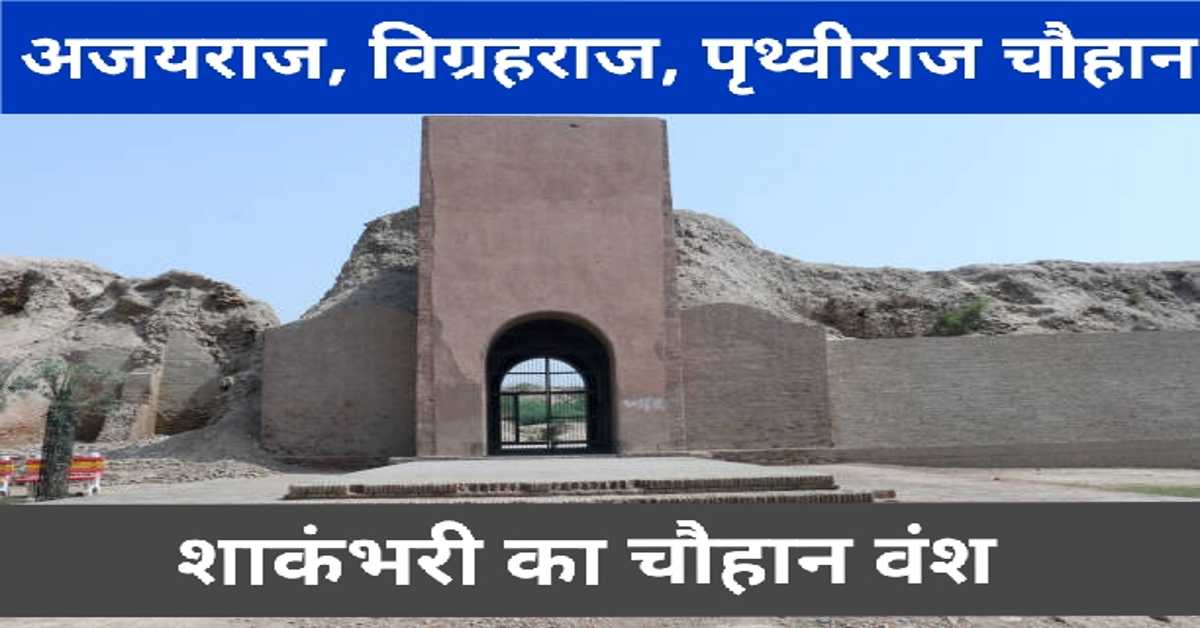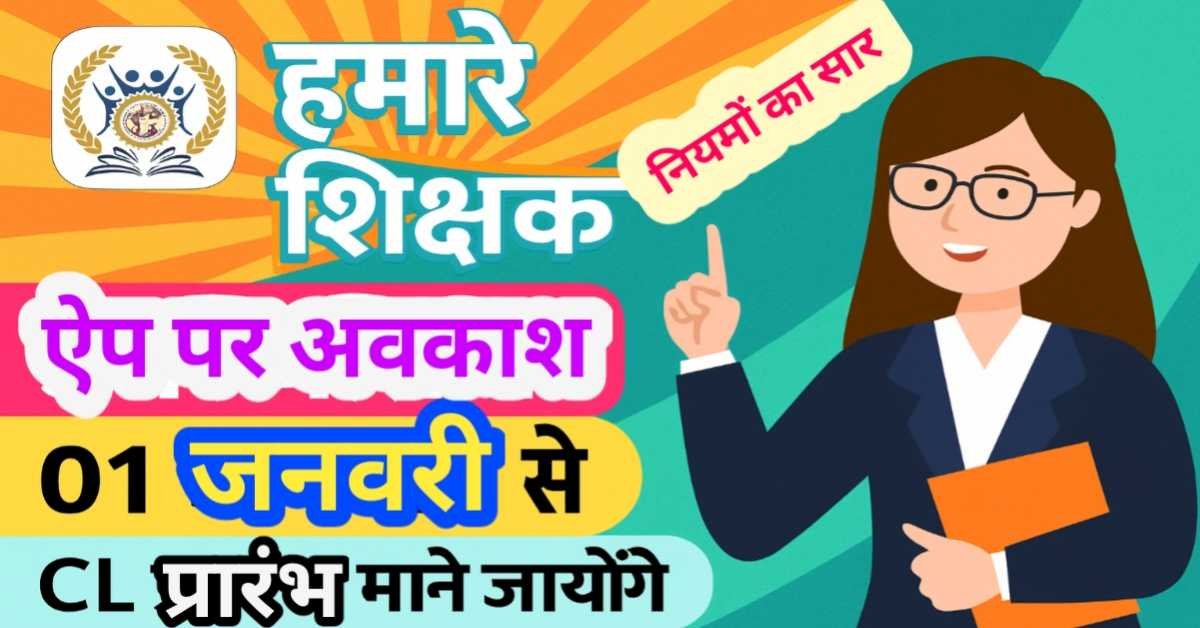
वैदिक सभ्यता - ऋग्वैदिक काल || Vedoc Civilization - Rrigvaidik Era
वैदिक सभ्यता (Vedoc Civilization) – भारतवर्ष में सिंधु सभ्यता के बाद जिस सभ्यता का प्रादुर्भाव हुआ, उसे 'वैदिक सभ्यता' कहा जाता है। इसे 'आर्य सभ्यता' भी कहते हैं। इस सभ्यता में वेदों का विशेष महत्व है। वेदों की संख्या 4 है - ऋग्वेद, सामवेद, यजुर्वेद और अथर्ववेद। इनमें से 'ऋग्वेद' सबसे प्राचीन है। वेदों की रचना इसी सभ्यता में हुई थी। वेद का शाब्दिक अर्थ 'ज्ञान' होता है। वैदिक संस्कृति के निर्माता को 'आर्य' कहे जाते हैं। आर्य का शाब्दिक अर्थ श्रेष्ठ, उत्तम, अभिजात, कुलीन एवं उत्कृष्ट होता है। आर्यों की भाषा 'संस्कृत' थी। सर्वप्रथम 'मैक्समूलर' ने 1853 ईस्वी में आर्य शब्द का प्रयोग किया था। उन्होंने इस शब्द का प्रयोग एक श्रेष्ठ जाति के लोगों से किया था।
The civilization that emerged after the Indus civilization in India is called 'Vedic Civilization' . It is also called 'Aryan civilization' . The Vedas have special significance in this civilization. The number of Vedas is 4 - Rigveda, Samaveda, Yajurveda and Atharvaveda . Of these, 'Rig Veda' is the most ancient. The Vedas were composed in this civilization. The literal meaning of Veda is 'knowledge' . The creator of Vedic culture is called 'Arya' . The literal meaning of Arya is superior, noble, aristocratic, noble and noble. The language of the Aryans was 'Sanskrit' . Firstly, 'MaxMuller' used the word Arya in 1853 AD. He used the term to mean people of a superior caste.
वैदिक संस्कृति को दो भागों में वर्गीकृत किया जा सकता है -
1. ऋग्वैदिक काल - 1500 - 1000 ई. पू.
2. उत्तर वैदिक काल - 1000 - 600 ईसा पूर्व
Vedic culture can be classified into two parts -
1. Rigvedic period - 1500 - 1000 BC
2. Post-Vedic period - 1000 - 600 BC
ऋगवैदिक काल (1500 - 1000 ईसा पूर्व) - 'ऋग्वेद संहिता' की रचना किस काल में हुई थी। यह इस काल की जानकारी प्राप्त करने का साहित्यिक स्त्रोत है। सिंधु सभ्यता के विपरीत यह सभ्यता पूर्ण मूलतः ग्रामीण थी। यहाँ का आरंभिक जीवन पशु चारण पर आधारित था। आर्यों के लिए कृषि गौण कार्य था। इस काल के प्रमुख देवता इन्द्र, वरुण, मित्र तथा नासत्य थे। इससे अनुमान लग जाता है कि वैदिक आर्य ईरान के रास्ते से होकर भारत में आए होंगे। ऋग्वेद की अनेक बातें 'अवेस्ता' (ईरानी भाषा का प्राचीनतम ग्रंथ) से प्राप्त होती हैं। आर्यों के मूल निवास के संदर्भ में विद्वानों के अलग-अलग मत हैं। किंतु प्रोफ़ेसर मैक्समूलर के विचारों को अधिकांश विद्वानों ने स्वीकार किया है। मैक्समूलर के अनुसार आर्यों का मूल निवास स्थल मध्य एशिया (बैक्ट्रिया) था।
Rigvedic period (1500 - 1000 BCE) - 'Rigveda Samhita' was composed in which period. It is the literary source to get information about this period. Unlike the Indus civilization, this civilization was essentially rural. The early life here was based on animal feed. Agriculture was a secondary task for the Aryans. The principal deities of this period were Indra, Varuna, Mitra and Nasatya. This infers that the Vedic Aryans must have entered India via Iran. Many things in the Rigveda derive from 'Avesta' (the oldest scripture in the Iranian language) . Scholars have different opinions regarding the original residence of the Aryans. But Professor Max Müller's views have been accepted by most scholars. According to Max Müller, the original place of residence of the Aryans was Central Asia (Bactria).
आर्यों के आरंभिक इतिहास के विषय में जानकारी प्राप्त करने का मुख्य स्रोत ऋग्वेद है। इस ग्रंथ में आर्यों का मूल निवास स्थल 'सप्त सैंधव क्षेत्र' बताया गया है। इसका अर्थ 'सात नदियों का क्षेत्र' होता है। ये सात नदियाँ सिंधु, सरस्वती, शतुद्रि (सतलुज), विपासा (व्यास), परूष्णी (रावी), वितस्ता (झेलम) और अस्किनी (चिनाब)। आर्यों का विस्तार अफगानिस्तान, पंजाब एवं पश्चिमी उत्तर प्रदेश तक था। सतलुज से यमुना तक का क्षेत्र 'ब्रह्मवर्त' कहा जाता था। गंगा व यमुना के दोआब क्षेत्र एवं उसके सीमावर्ती क्षेत्रों पर आर्यों ने अपना कब्जा कर लिया था। इसे 'ब्रह्मर्षि देश' कहा जाता था। कालांतर में संपूर्ण उत्तर भारत में आर्यों ने अपना विस्तार कर लिया। इसे 'आर्यावर्त' के नाम से जाना जाने लगा। इस काल की सबसे महत्वपूर्ण नदी 'सिंधु' है, जबकि सबसे पवित्र नदी 'सरस्वती' हैं। इसे 'देवीतमा', 'मातेतमा' एवं 'नदीतमा' कहा गया है। ऋग्वेद में गंगा नदी का एक बार एवं यमुना नदी तक तीन बार नाम लिया गया है।
The main source of information about the early history of the Aryans is the Rigveda. In this book, the original residence of the Aryans is described as 'Sapta Sandhav Kshetra' . It means 'area of seven rivers' . These seven rivers are the Indus, Saraswati, Shatudri (Sutlej), Vipasa (Vyasa), Parushni (Ravi), Vittasta (Jhelum) and Askini (Chenab). The Aryans extended to Afghanistan, Punjab and western Uttar Pradesh. The region from Sutlej to Yamuna was called 'Brahmavart' . The Aryans occupied the Doab region of the Ganges and the Yamuna and its border areas. It was called 'Brahmarshi Desh' . Later, the Aryans expanded themselves throughout North India. It came to be known as 'Aryavarta' . The most important river of this period is 'Indus' , while the most sacred river is 'Saraswati' . It has been called 'Devitama', 'Matetama' and 'Nadeetama' . In the Rigveda, the river Ganges is named once and up to the Yamuna river three times.
ऋगवैदिक समाज 'पितृसत्तात्मक' था। परिवार का मुखिया 'पिता' होता था। सामाजिक संगठन का आधार गोत्र अथवा जन्ममूलक था। समाज की आधारभूत इकाई परिवार अथवा कुल थी। इसे 'कुलप' कहा जाता था। इस समाज में महिलाओं को यथोचित सम्मान प्राप्त था। इस काल में संयुक्त परिवार का प्रचलन था। वर्ण व्यवस्था का भी प्रचलन था। ऋग्वेद के दसवें मंडल में वर्णित पुरुष सूक्त में चार वर्णों की उत्पत्ति का वर्णन किया गया है। इसके अनुसार विराट पुरुष के मुख से ब्राह्मण, क्षत्रिय भुजाओं से, वैश्य जाँघों से तथा शूद्र पैरों से उत्पन्न हुए हैं। इस काल में बाल विवाह, सती-प्रथा एवं पर्दा-प्रथा जैसी कुप्रथाओं का प्रचलन नहीं था। इस काल में स्त्रियाँ अपने पति के साथ यज्ञ में भाग ले सकती थी। पुत्रियों का भी उपनयन संस्कार किया जाता था एवं विधवा विवाह की प्रथा भी प्रचलित थी। सामान्यतः एक पत्नीत्व विवाह ही होता था। विवाह में दहेज जैसी कुप्रथा का प्रचलन नहीं था, किंतु कन्या को 'वहतु' नामक उपहार दिया जाता था। स्त्रियों को भी शिक्षा का अधिकार प्राप्त था। इस काल की कुछ विदुषी स्त्रियाँ लोपामुद्रा, घोषा, सिकता, अपाला तथा विश्ववारा हैं। आजीवन अविवाहित रहने वाली कन्या को 'अमाजू' कहा जाता था। इस काल में दास प्रथा का भी प्रचलन था, किंतु यह प्राचीन यूनान एवं रोम की भाँति नहीं थी। ऋगवैदिक काल के लोग अर्थात आर्य मांसाहारी व शाकाहारी दोनों प्रकार का भोजन ग्रहण करते थे। वे लोग सूत, ऊन, व चर्म के वस्त्र धारण करते थे। मृतकों को प्रायः अग्नि में जलाया जाता था। इसके अतिरिक्त कभी-कभी दफनाया भी जाता था।
The Rigvedic society was 'patriarchal' . The head of the family used to be 'father' . The basis of social organization was gotra or birth-born. The basic unit of the society was the family or clan. It was called 'Kulp' . In this society, women were accorded due respect. Joint family was prevalent during this period. Varna system was also prevalent. The origin of the four varnas is described in the Purusha Sukta mentioned in the tenth mandala of the Rigveda. According to this, Brahmins originated from the mouth of Virat Purush, from Kshatriya arms, from Vaishya thighs and from Shudra feet. During this period, there were no practices like child marriage, sati-system and curtain-practice. During this period, women could participate in the yajna with their husbands. Upanayan rites of daughters were also performed and the practice of widow marriage was also prevalent. Normally, there was a married marriage. Dowry-like illusion was not practiced in marriage, but the girl was given a gift called 'Vahatu' . Women also had the right to education. Some female women of this period are Lopamudra, Ghosha, Sikta, Appala and Vishvavara . The girl who remained unmarried for a lifetime was called 'Amaju' . In this period, slavery was also practiced, but it was not like ancient Greece and Rome. The people of the Rig Vedic period, ie Aryans used to eat both non-vegetarian and vegetarian food. They wore cotton, wool, and leather garments. The dead were often burnt in fire. In addition, burial was sometimes done.
ऋगवैदिक काल कबीलाई व्यवस्था पर आधारित था। ये लोग जनों व कबीलों में वर्गीकृत थे। कबीले का एक राजा हुआ करता था, जिसे 'गोप' कहते थे। आर्यों को 'पंचानन' भी कहते हैं, क्योंकि इनके पाँच कबीले या (कुल) थे - अनु, द्रुहु, पुरू, तुर्वस एवं यदु। इस काल में राज्य का मूलाधार कुल (परिवार) था। परिवार का एक मुखिया हुआ करता था, जिसे 'कुलप' या 'ग्रहपति' कहते थे। कुलों के आधार पर ग्राम बनाए जाते थे जिसका प्रमुख 'ग्रामणी' कहलाता था। अनेक ग्राम मिलकर विश का निर्माण करते थे जिसका प्रधान 'विशपति' होता था। विश से जन का निर्माण होता था, जो कबीलाई संगठन था। इसका प्रमुख 'जनपति' होता था।
The Rig Vedic period was based on the tribal system. These people were classified into people and tribes. There used to be a king of the clan, called 'Gop' . The Aryans are also called 'Panchanan' , as they had five clan or (clan) - Anu, Druhu, Puru, Turvus and Yadu . In this period, the base of the state was the clan (family). There used to be a head of the family, called 'Kulap' or 'Grahapati' . Villages were built on the basis of clans whose chief was called 'Gramani' . Many villages used to make Vish, whose head was 'Vishpati' . People were formed from the Vish, which was a tribal organization. It was headed by 'Janapati' .
राजा - पुरोहित - विशपति - ग्रामणी - कुलप
Raja - Purohit - Vishpati - Gramani - Kulap
अतः इस प्रकार आर्यों की प्रशासनिक इकाइयाँ पाँच भागों में वर्गीकृत थी -
1. कुल
2. ग्राम
3. विश
4. जन
5. राष्ट्र
Thus, the administrative units of the Aryans were thus classified into five parts -
1. Total
2. Village
3. Wish
4. People
5. Nation
इस काल में राजतंत्रात्मक शासन प्रणाली का चलन था। साथ ही गणतंत्र भी मौजूद थे। राजा का कर्तव्य कबीले की रक्षा करना होता था। ऋगवैदिक काल में अनेक जनतांत्रिक संस्थाओं का विकास हुआ। इनमें सभा समिति तथा विदथ प्रमुख हैं। इन संस्थाओं में राजनीतिक, सामाजिक, आर्थिक, धार्मिक विषयों पर चर्चाएँ होती थी। इस काल में महिलाएँ भी राजनीति में सक्रिय थी। सभा एवं समिति राजा को सलाह देती थीं। विदथ आर्यों की प्राचीन संस्था थी। इस काल में राजा भूमि का स्वामी नहीं होता था। भूमि का स्वामित्व जनता में निहित था। उस काल में 'बलि' एक प्रकार का कर था, जो प्रजा द्वारा स्वेच्छा से दिया जाता था। उस काल में राजा के पास अपनी स्वयं की सेना नहीं होती थी। किंतु युद्ध की स्थिति उत्पन्न होने पर राजा नागरिकों को संगठित कर सेना का निर्माण करते थे। इसका संचालन अलग-अलग टोलियाँ करती थी। इस काल के राजा को 'गोप्ता जनस्य' अर्थात कबीले का संरक्षक एवं 'पुराभेत्ता' अर्थात् नगरों पर विजय पाने वाला कहते हैं।
The system of monarchical governance was prevalent in this period. Also, republics were also present. The king's duty was to protect the clan. Many democratic institutions flourished during the Rig Vedic period. Among them are the House Committee and Vidith. Political, social, economic, religious subjects were discussed in these institutions. Women were also active in politics during this period. The assembly and the committee used to advise the king. Vidath was an ancient institution of Aryans. In this period, the king was not the owner of the land. The ownership of the land was vested in the public. In that period 'sacrifice' was a type of tax, which was voluntarily given by the subjects. In that period the king did not have his own army. But when a situation of war arose, the kings used to organize the army by organizing the citizens. It was operated by different groups. The king of this period is known as 'Gupta Janus' ie the patron of the clan and 'Purabhatta' ie the conqueror of the cities.
आर्यों की संस्कृति ग्रामीण एवं कबीलाई थी। पशुपालन उनका प्राथमिक पेशा एवं कृषि द्वितीयक पेशा था। इस काल में गाय को पवित्र पशु माना जाता था एवं गाय विनिमय के साधन के रूप में प्रयुक्त होती थी। गाय को 'अष्टकर्णी' भी कहा जाता था। गाय को अघन्या अर्थात् न मारे जाने वाला पशु कहा जाता था। गाय की हत्या करने वाले या उसे घायल करने वाले को वेदों के अनुसार मृत्युदंड अथवा देश निकाला दिया जाता था। पणि नामक व्यापारी पशुओं की चोरी हेतु कुख्यात थे। पुत्री को 'दुहिता' कहा जाता था, क्योंकि वे गाय का दूध दुहती थी। घोड़ा आर्य समाज में उपयोगी पशु था। इसके अतिरिक्त गाय, बैल, भैंस, बकरी पशु भी थे। उस काल में धान जैसी फसलों की खेती की जाती थी। वस्तु विनिमय की प्रणाली प्रचलित थी। इस काल में 'निष्क' का भी उल्लेख मिलता है। यह स्वर्ण के आभूषण या सोने का टुकड़ा होता है। वेकनाट सूदखोर थे, जो लोगों से बहुत अधिक ब्याज लेते थे। ऋग्वेद में बढ़ई, रथकार, बुनकर, चर्मकार , कुम्हार आदि शिल्पियों का उल्लेख भी किया गया है। सोने के लिए 'हिरण्य' शब्द का प्रयोग किया गया है। कपास का उल्लेख नहीं मिलता है। अष्टकर्णी शब्द से यह विदित होता है कि आर्य संभवतः अंको की जानकारी रखते थे। इस काल में 'अयस' का भी उल्लेख मिलता है। इसकी पहचान संभवत तांबे या काँसे के रूप में की गई है। इस काल के लोग लोहे से परिचित नहीं थे।
The culture of the Aryans was rural and tribal. Animal husbandry was his primary profession and agriculture was the secondary profession. In this period, the cow was considered a sacred animal and the cow was used as a means of exchange. The cow was also known as 'Ashtakarni' . The cow was called aghanya ie, an animal that was not killed. Those who killed or injured a cow were sentenced to death or expelled from the country according to the Vedas. Traders known as Pani were notorious for stealing animals. The daughter was called 'duhita' , because she milked cow's milk. The horse was a useful animal in the Arya Samaj. Apart from this, there were also cows, bulls, buffalo, goat animals. In that period crops like paddy were cultivated. The system of barter was in vogue. There is also mention of 'Nishk' in this period. It is a gold ornament or piece of gold. The Vankanat were usurers, who took a great deal of interest from the people. Carpenters, chariots, weavers, tanners, potters etc. are also mentioned in the Rigveda. The word 'Hiranya' has been used for sleeping. There is no mention of cotton. The word Ashtakarni indicates that Arya was probably aware of the marks. There is also mention of 'Ayas' in this period. It may have been identified as copper or bronze. People of this period were not familiar with iron.
RF competition
INFOSRF.COM
संबंधित जानकारी नीचे देखें।
(Watch related information below) 👇🏻

आशा है, उपरोक्त जानकारी उपयोगी एवं महत्वपूर्ण होगी।
(I hope the above information will be useful and important. )
Thank you.
लेखक
(Writer)
infosrf.com


.jpg)





